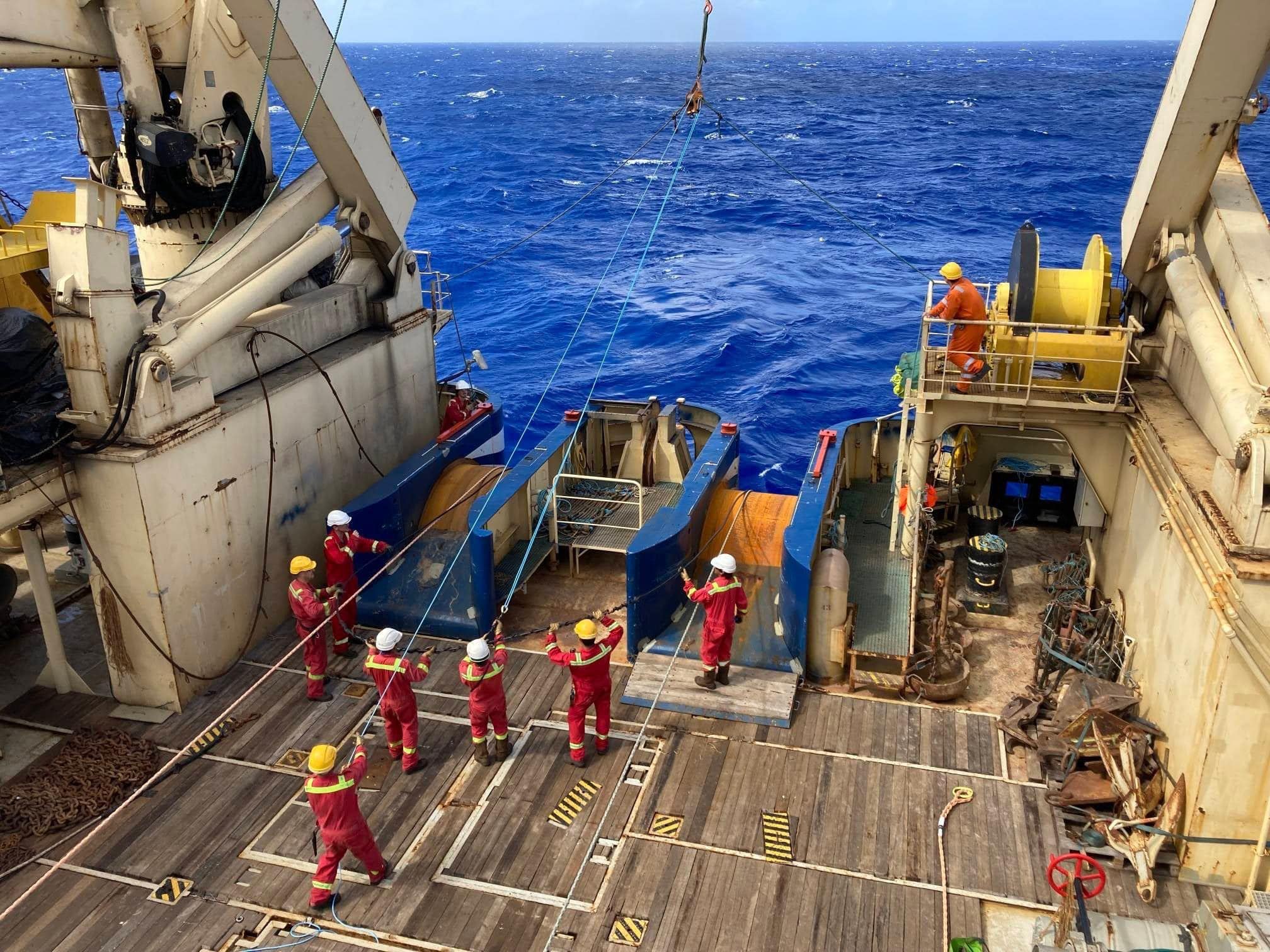Tonga’s domestic telecommunications cable was torn apart by tremendous forces and deeply buried under volcanic debris on the ocean floor…and it may take up to a year to fix.
Up to 110km of a special cable may have to be manufactured in France and delivered, if Tonga Cable Ltd can’t source a spare cable of the same type from anyone in the world who holds a spare.
“Unfortunately, the domestic cable break will be with us for several more months,” said Tonga Cable Ltd CEO, James Panuve, saying it would be safe to bet on a year.
The cable ship Reliance departed the cable site Monday morning, after successfully recovering both ends of the domestic cable.
He said the south end of the broken cable was found 31km from Tongatapu and the north end was located about 136km from Tongatapu. There is gap of around 110km between the two broken ends.
“It has attempted to recover the middle section but it appears that the cable has been deeply buried under debris from the volcano eruption of 15 January. Without proper survey equipment it is hard to tell what has happened to the cable system. Water depth in this area is between 1.6 to 1.8km.”
He said the ship will provide Tonga Cable Ltd.with a more detailed report on their findings, “but we estimate that we are looking at needing up to 110km of this submarine cable before we can repair the damage to the domestic system.
“The other problem is that this cable type is not easily sourced and none of our neighbouring cable operators have any of this cable type. We are looking worldwide for anyone with spare cable of this type, failing which, we will need to order it from Alcatel in France, which could take 6-9 months to manufacture and deliver.
“But as with most things, I think it would be safe to bet on a year,” Panuve said.
The seabed around the Hunga Tonga – Hunga Ha’apai (HTHH) volcano changed dramatically during the eruptions, and the domestic cable was laid close to it. Tonga might have to rethink whether it’s safe to lay a new cable in the same place. James hopes some proposed research of the seabed will go ahead.
“We have been contacted by a group known as the International Cable Protection Committee (ICPC) who are interested in sending a research vessel to do a survey of the HTHH area and our cable system to see what the seabed looks like after the devastating volcano eruption of 15 January.
“This may be of great assistance for Tonga Cable in understanding what happened to our two cable systems and possibly whether it is safe to relay our domestic cable on its original path. If successful, the research vessel may be visiting our waters in March or April of this year.”
Panuve also expressed his gratitude to the neighbouring cable operators in the region who helped Tonga repair the break in its international cable between Fiji and Tonga.
“Although the repair time was a bit longer than what we had originally anticipated, considering the amount of damage caused to our international cable we are lucky to have had it repaired by 22 February.
“Some cable operators reached out to us to offer their assistance and we also had to ask some of them to lend us some of their spares, which were stored on the cable repair ship, Reliance.
“Without their generosity and support, our international cable would not have been repaired and Tonga would still be without our normal internet speed. The assistance from the following three companies is greatly acknowledged:
* OPT-NC New Caledonia, 59km of fibre optic cable
*Interchange Limited, Vanuatu, 8 repair kits
*Southern Cross Cable Network, Australia/New Zealand, 3 repair kits.
“Tonga Cable will have to replace or reimburse these three cable companies for the spares that we utilised in our repair job.”
So at the moment Panuve said that Tonga Cable is only able to provide international connectivity to Tongatapu.
“Through TCC and Digicel, this connectivity extends to ‘Eua and the surrounding small islands around Tongatapu.
“Tonga Cable is still not able to provide connectivity through its submarine cable on the domestic system which links Tongatapu to Ha‘apai and Vava‘u. As such, connectivity to the Ha‘apai and Vava’u groups are through Digicel’s and TCC’s own microwave and satellite links,” he said.
Demand for bandwidth is almost back to normal.
“We’ve noticed a 3% dip in utlisation since the cable was damaged on 15 January. However, we expected a bigger dip in traffic than this, given that our domestic cable is still damaged,” he said.

2 Comments on “U.S funding tapped for Pacific undersea cable after China rebuffed”
Comments are closed.